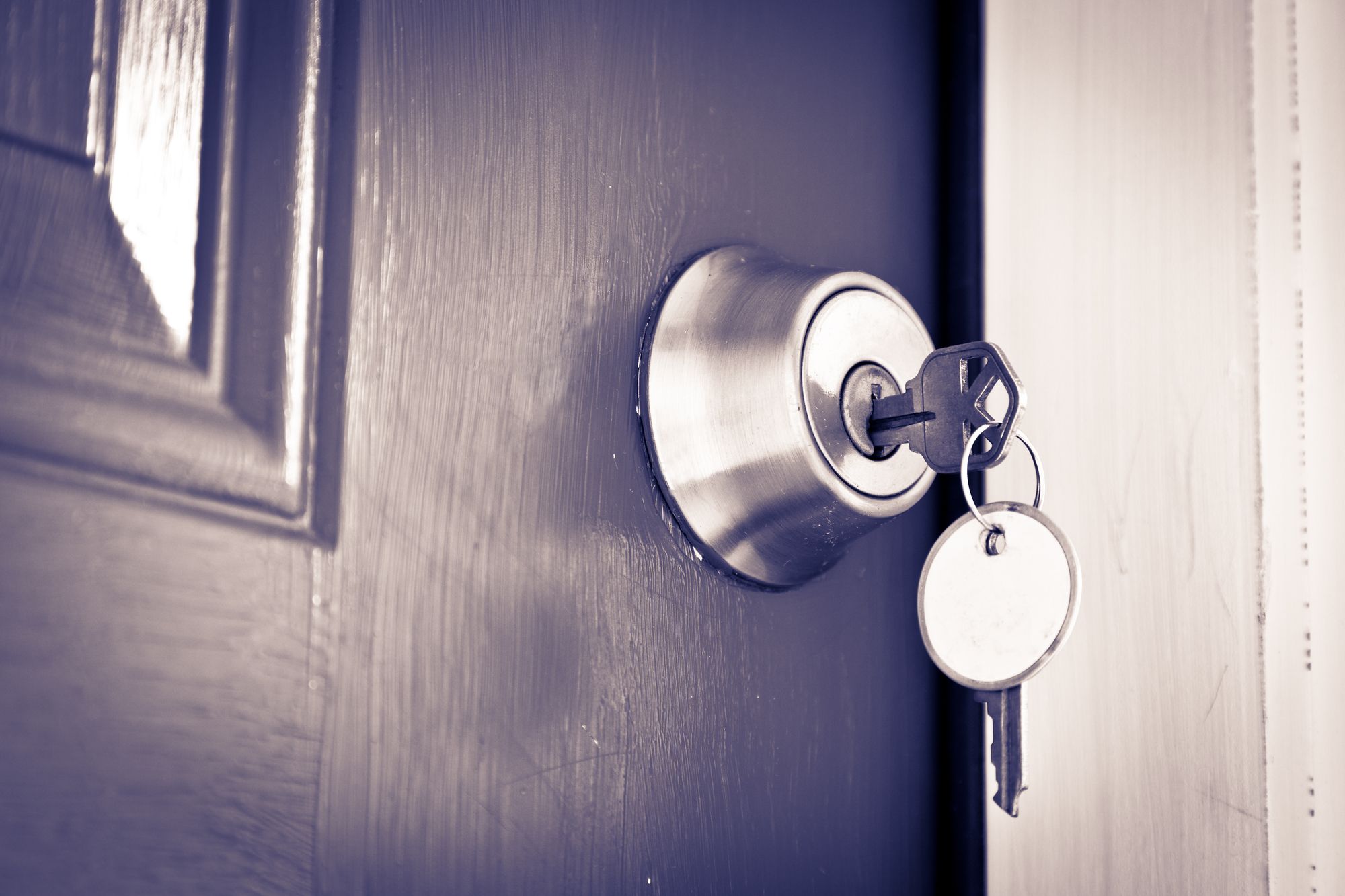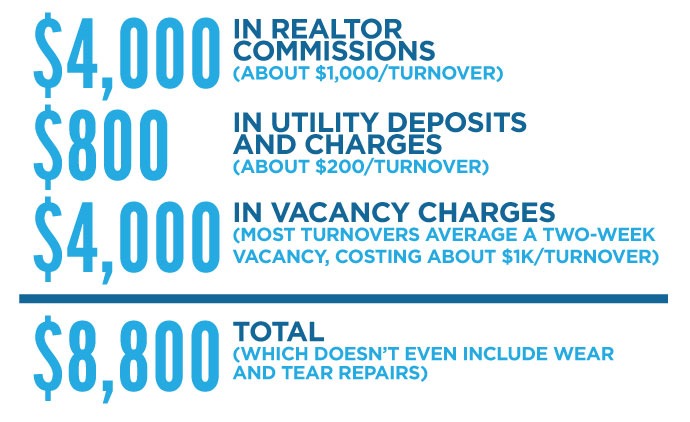
Tenant turnover is a huge pain. When tenants move out, they leave high costs and unavoidable frustrations in their wake. And since most leases are 12 months, you could be dealing with these issues annually.
First, they cost you money – the utility transfer expenses alone add up to hundreds of dollars.
Then, as you search for your next tenant, they cost you time – working with the existing tenant to schedule showings for new tenants is rarely easy. You’ll waste hours because your tenant is sick or has a problem with their pet, which interferes with showing availability. Plus, you have to convince the tenant to let you show the property when they aren’t home.
After they move out, they cost you more money – you’ll deal with a vacancy period that leaves you without cash flow. And you need to make sure the property is move-in ready for your next tenant. That means you’ll spend money making repairs of normal wear and tear.
So is your tenant turnover rate too high? Are you spending time and money each year transferring the property from one tenant to the next when you could be saving? Let’s have a look at four warning signs that can help you solve your turnover problem.
1. Do the Math on Your Renewal Rate
If 50% of your tenants aren’t renewing, you have a turnover problem. LEAP Property Management’s average retention rate is over 70% meaning each year, more than 70% of our tenants renew their lease (for at least another year), which saves our clients major money.
Here’s how the numbers can add up – even if you just have one property. If you have four turnovers in five years in a property that rents for $2K/month, this is an estimate of your turnover expenses:

And that is the best-case scenario. If you can’t lease the property before the tenant moves out, the vacancy period costs escalate quickly.
But what if you could cut that number in half? With our averages, you may only have two turnovers in that same five-year period, saving at least $4,400.
2. Early Non-Renewal Notice
It’s a red flag when tenants call you well before your renewal deadline to inform you they won’t be staying. Tenants who put in their notice before the deadline have emotionally checked out of the property. That signals a problem. Something happened (or didn’t happen) that made them decide to leave. Unfixed repairs or unresolved issues can prompt tenants to give you early notice. Also, once they have decided to leave, tenants are less likely to care for the property – which means higher repair costs when it’s time to turn it over.
3. Constant Complaining About Necessary Repairs
You can’t make every repair immediately, but tenants need to know you’ll take care of them. So make needed repairs promptly. Otherwise, they’ll harbor resentment and become disgruntled by your treatment of the property.
Even if a requested repair is unnecessary, communicate with the tenants about it. We respond to tenants within a reasonable time to let them know if the repair falls outside the lease. For an extra measure of care, show the tenants the terms in the lease that you’re following.
If you leave needs unmet or simply don’t respond, they’ll be much less likely to sign on for another year.
4. No Formal Systems in Place
Good tenants want a professional landlord. If you don’t have the systems to make interactions with the tenant easy, your desirable tenants won’t usually stick around.
So do tenants ever request more options for payment methods? They need an easy way to get their rent to you each month.
Do you have a good way to follow up with them? If they miss a payment or another issue comes up, you should have a process in place for dealing with it. Standard methods of operation show tenants that you know what you’re doing. And professional landlords keep tenants around a little longer.
Don’t let tenant turnover drain your resources. If your turnover rate is too high, give us a call. Our services keep tenants around longer, freeing you to spend your time and money as you choose!


